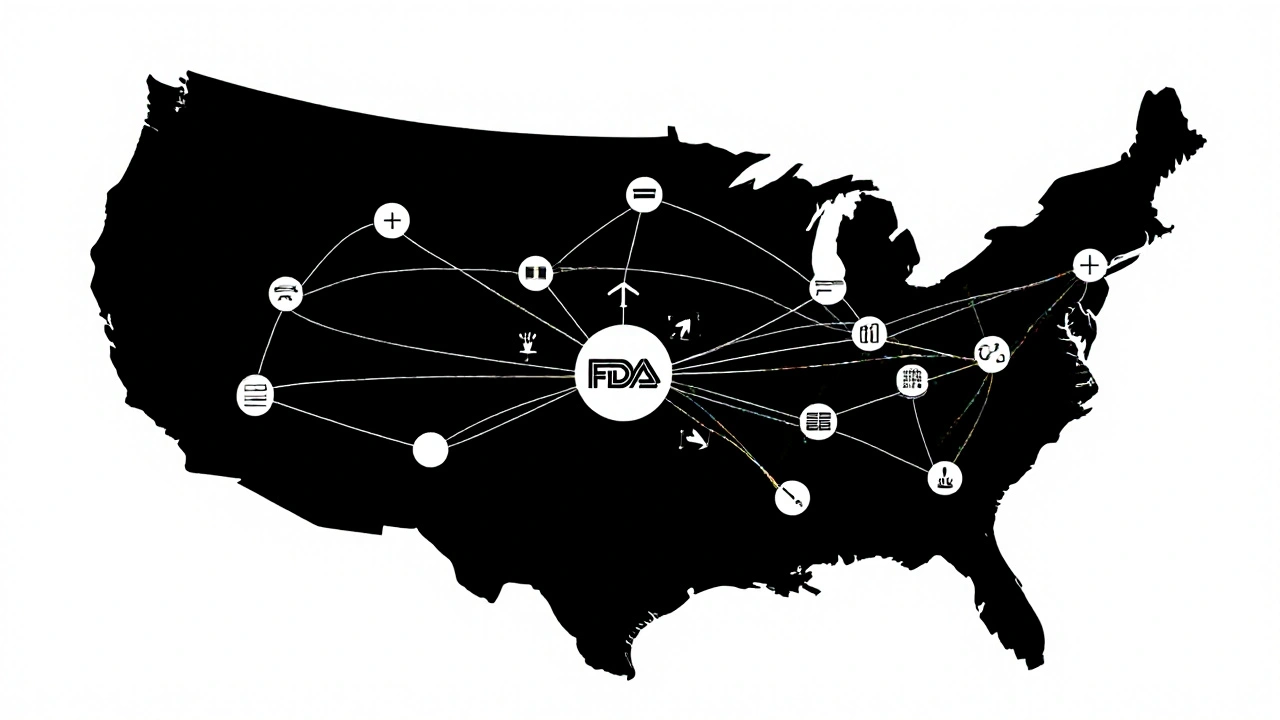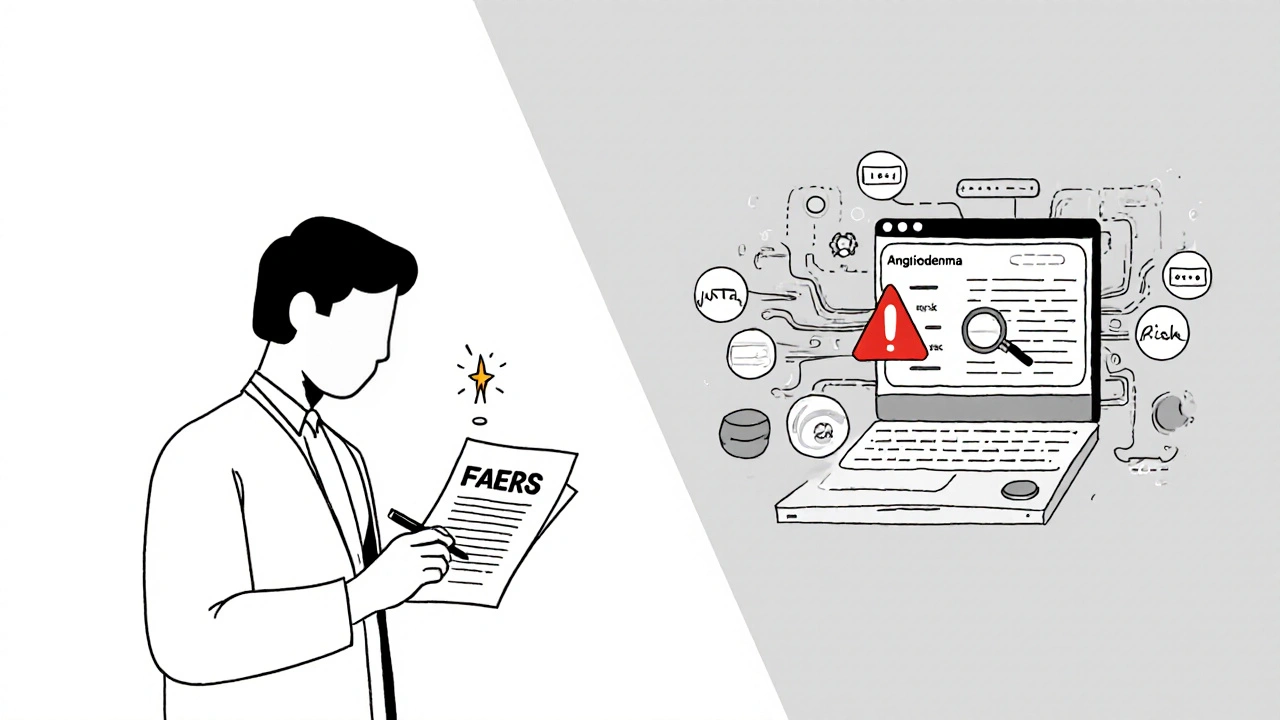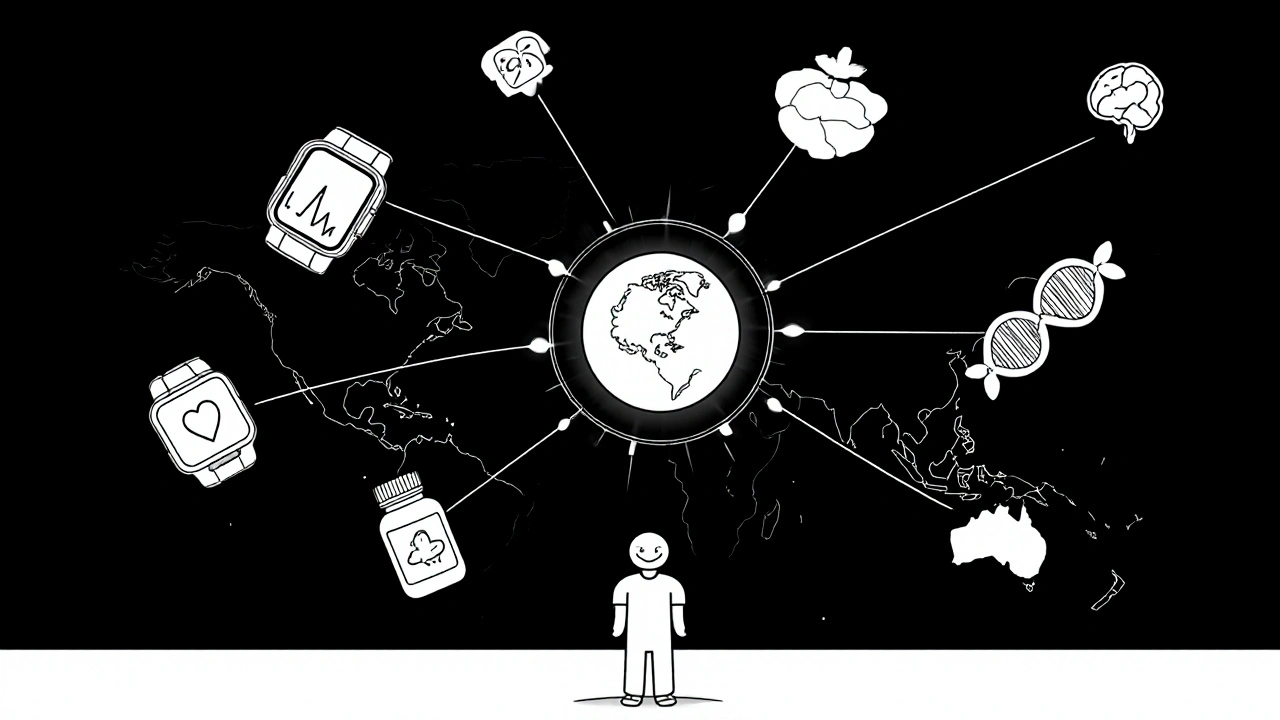
FAERS vs Sentinel Safety Monitoring Comparison Tool
Compare Safety Monitoring Approaches
This tool demonstrates key differences between traditional reporting (FAERS) and modern active surveillance (Sentinel Initiative) using real-world data examples from the article.
Risk Comparison Results
Click Calculate to view resultsNo calculation performed yet
No calculation performed yet
Note: FAERS shows only reported cases, while Sentinel analyzes actual population risk ratios. This demonstrates why Sentinel can detect signals that FAERS misses.
The U.S. Food and Drug Administration doesn’t wait for patients to get sick before acting. Since 2016, it’s been using FDA Sentinel Initiative-a massive, real-time data network-to catch dangerous side effects from drugs, vaccines, and medical devices before they become national crises. This isn’t just another database. It’s a distributed, nationwide surveillance system that analyzes health records from millions of Americans without ever moving their personal data. And it’s changing how we know if a medicine is truly safe after it hits the market.
Why Traditional Reporting Isn’t Enough
For decades, the FDA relied on the FDA Adverse Event Reporting System (FAERS), where doctors, pharmacists, or patients voluntarily report side effects. Sounds simple, right? But here’s the problem: only about 1% to 10% of serious adverse events get reported. Many people don’t connect their symptoms to a drug. Others don’t know how to report. And even when they do, reports often lack details-no dosage, no medical history, no timeline. Without knowing how many people took the drug in the first place, it’s impossible to tell if a side effect is rare or common. Take a drug like rosiglitazone, used for diabetes. In 2007, concerns about heart risks emerged. But FAERS alone couldn’t confirm whether the risk was real or just noise. That’s when the FDA realized: passive reporting was like trying to spot a fire with a flashlight in a dark forest. You might see a spark, but you won’t see the whole blaze.How Sentinel Works: No Data Moved, All Insights Gained
The Sentinel Initiative solves this with a clever trick: it never takes your data. Instead, it asks the data to come to it. Sentinel connects to 18 major healthcare organizations-insurance companies, hospital systems, and clinics-that hold electronic health records and insurance claims for over 280 million people. These are called Data Partners. When the FDA wants to check if a drug increases the risk of kidney failure, they don’t download records. They send a secure, standardized query through a portal. Each Data Partner runs that same query on their own system. The results-aggregated, anonymized, and verified-are sent back to the FDA. All without moving a single patient record. This distributed model keeps data private, respects HIPAA, and avoids the legal nightmares of centralizing medical records. But it also means every partner must use the same tools and definitions. A “heart attack” in one system must match a “heart attack” in another. That’s why Sentinel uses a common data model called the Common Data Model (CDM). It turns messy, inconsistent EHRs into clean, comparable data.From Claims to Clinical Notes: The Rise of Real-World Evidence
Early on, Sentinel relied mostly on insurance claims data-things like diagnosis codes, prescriptions, and hospital visits. But claims data has gaps. It won’t tell you if a patient had a rash, dizziness, or memory loss unless it was billed as a separate visit. That’s why Sentinel started adding electronic health records (EHRs). These contain doctor’s notes, lab results, vital signs, and even free-text entries like “patient reports unusual fatigue after starting medication.” The Sentinel Innovation Center now uses natural language processing (NLP) to pull meaning from those unstructured notes. Machine learning models scan thousands of clinical summaries to find patterns humans might miss. In one 2021 study, Sentinel used EHR data to confirm that a common blood pressure drug increased the risk of angioedema-a dangerous swelling-in Black patients at higher rates than previously known. That finding led to updated safety labels within months.
What Sentinel Has Actually Found
Sentinel isn’t theoretical. It’s driven real regulatory actions:- Confirmed an increased risk of pancreatitis with GLP-1 agonists (weight-loss drugs like semaglutide)
- Detected a spike in Guillain-Barré syndrome after a specific flu vaccine, prompting a warning update
- Identified that certain diabetes drugs raised the risk of leg amputations in patients with poor circulation
- Helped validate the safety of mRNA vaccines in elderly populations during the pandemic
Who Uses Sentinel-and Why
It’s not just the FDA. Since 2019, Sentinel has been split into three centers:- Sentinel Operations Center (SOC): Runs the queries and manages the network
- Innovation Center (IC): Builds new tools using AI, machine learning, and causal inference models
- Community Building and Outreach Center: Trains researchers, industry partners, and international regulators to use the system

Limitations: Big Data Isn’t Perfect
Sentinel is powerful-but not magic. It still struggles with:- Rare events: If a side effect happens in 1 in 100,000 people, you need millions of records to spot it-and even then, noise can drown it out
- Data gaps: Not everyone visits a doctor. Home remedies, over-the-counter meds, or symptoms ignored by patients won’t show up
- Code errors: A misclassified diagnosis or incorrect billing code can lead to false signals
- Complexity: Running a query requires training in epidemiology, statistics, and health informatics. It’s not something a general practitioner can do on a lunch break
The Future: AI, Global Networks, and Real-Time Alerts
The next phase of Sentinel-sometimes called Sentinel 3.0-is already underway. With $304 million in funding, the FDA is pushing deeper into AI:- Using predictive models to flag drugs likely to cause problems before they’re even widely used
- Integrating wearable data (like heart rate monitors or glucose trackers) from patients who consent
- Building partnerships with the European Medicines Agency and Health Canada to create a global safety network
When you take a new medication, you’re trusting that someone is watching for hidden risks. The FDA Sentinel Initiative is that watcher. It’s not perfect. But it’s the most advanced, scalable, and secure system ever built to protect public health using real-world data.
How is Sentinel different from FAERS?
FAERS is a voluntary reporting system where people submit adverse event reports, often with incomplete or inconsistent data. Sentinel is an active surveillance system that analyzes real-world data from millions of electronic health records and insurance claims. It uses known exposure rates to calculate actual risk, not just counts of reports.
Does Sentinel collect personal health information?
No. Patient data stays with the healthcare organizations that own it. The FDA sends analytical queries to these organizations, and only aggregated, anonymized results are returned. No names, addresses, or identifiable details are ever shared with the FDA.
Can researchers outside the FDA use Sentinel?
Yes. Academics, industry scientists, and international regulators can submit research proposals through the Sentinel Innovation Center. If approved, they can run queries using the same tools and data as the FDA, under strict oversight and data use agreements.
How fast does Sentinel detect safety issues?
Typical safety assessments take 4 to 12 weeks, depending on complexity. This is much faster than traditional studies, which can take years. For urgent threats-like a spike in heart attacks after a new drug launch-Sentinel can deliver preliminary results in under two weeks.
Is Sentinel used outside the U.S.?
While the system is U.S.-based, its architecture and methods have inspired similar networks in Europe, Canada, Japan, and Australia. The FDA actively collaborates with international regulators to align data standards and share findings, making Sentinel a global model for drug safety monitoring.



